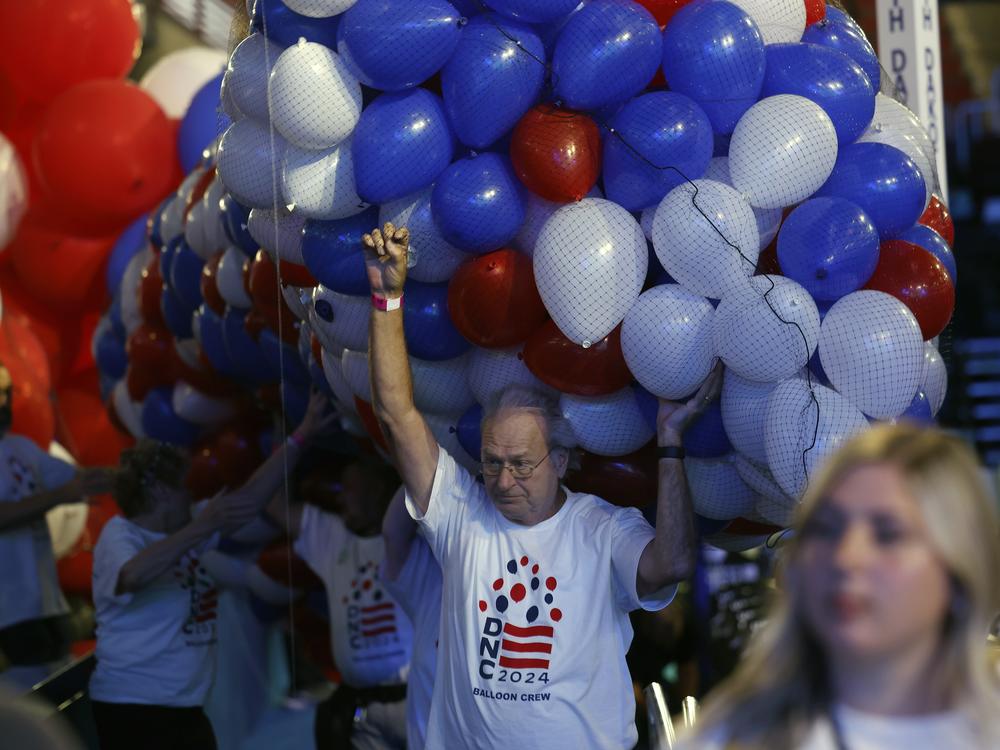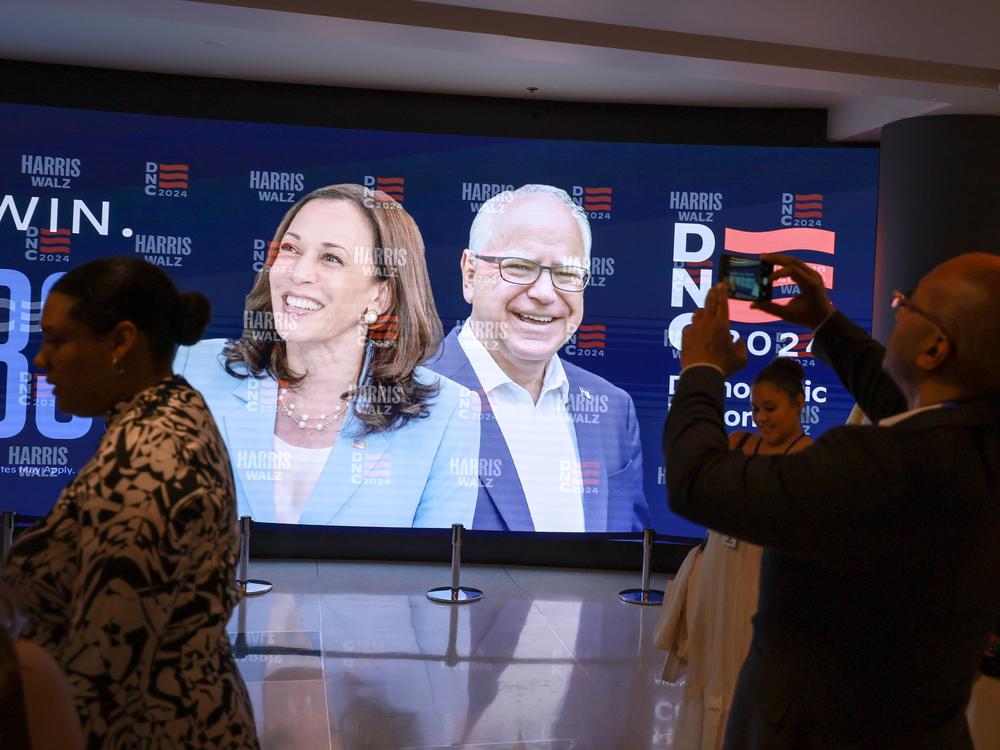Section Branding
Header Content
29 days: how Democrats had to overhaul their convention in a hurry for Harris
Primary Content
When President Biden pulled out of the race in late July, it kicked off a sprint to remake four days of speeches, sentimental videos and other programming for the Democratic National Convention — programming that had all been revolving around him.
Now, on Monday, the convention designed to make the case for Vice President Harris to be the next president of the United States kicks off in Chicago — only two weeks after she secured enough votes from delegates to become her party’s nominee.
“It’s a convention planner’s nightmare,” said Erik Smith with a laugh.
Smith was the creative director for the 2008, 2012 and 2016 Democratic conventions. He shudders to imagine the scramble to reshape this year’s event around Harris, who originally was going to have only a supporting role.
Biden is a well-known political quantity. But despite being vice president for nearly four years, Smith described Harris as the most-famous least-known politician on the national stage right now.
“My grandmother used to say, ‘You only make a first impression once.’ And Kamala Harris has the benefit of making a first impression twice,” said Smith, chief executive of the public relations firm Seven Letter.
“This is really the second time she can introduce herself to Americans, and this is going to be a much more impactful venue to do that.”
There’s still a blue stage. But what’s happening on it is very different
On the day Harris secured the nomination, Democratic National Committee Chairman Jaime Harrison was in front of a webcam at the United Center in Chicago. The arena floor behind him looked like a construction site.
“The stage is quite literally being set and being built right now,” Harrison said during a livestream announcing Harris’ milestone.
“Everyone here is hard at work putting together what will certainly be a historic and momentous convention.”
That stage was designed long ago. And it is one of the big things – along with security preparations and other logistics – that didn’t change with the nominee swap.
“It’s blue. The carpet is blue, you know, it’s blue,” said Leah Daughtry, chair of the Democratic party’s rules committee, who was chief executive of the convention in 2008 and 2016. “We like blue on this side.”
But what’s being said up on that stage did have to change.
Originally, the program was built around promoting the accomplishments of the Biden-Harris administration and making the case for a second Biden term. It was built around Biden’s campaign.
But Harris, even in these early weeks, is running a decidedly different campaign, with a more positive, forward-looking message and tone.
Daughtry said the convention will be a “hybrid.” The president will still be there, but he’s been relegated to Monday night. The focus will now be on Harris and her running mate, Minnesota Governor Tim Walz.
“Now the convention has that responsibility of sharing who our nominees are, of introducing them or reintroducing them to America, and allowing them to directly ask the American people for their trust, their confidence and their vote,” she said.
Not the first Democratic convention scramble
This is not the first time the Democratic convention has changed plans on the fly.
In 2012, then-President Barack Obama was supposed to deliver his acceptance speech from a massive outdoor stadium. Bad weather forced a last-minute change in plans, and a move to a smaller indoor arena.
“That meant people lost their slots and people had to have shorter speeches. It caused a lot of chaos — but by comparison that was just one night,” Erik Smith recalled.
In 2020, the COVID pandemic forced the convention to go virtual, which led to the most memorable roll call in recent memory.
A representative of each state’s delegation announced their votes with a short video. Rhode Island went viral. State Rep. Joseph McNamara spoke from the beach next to a chef dressed in all black, holding up a large tray of fried calamari.
“The calamari comeback state of Rhode Island casts one vote for Bernie Sanders and 34 votes for the next president Joe Biden,” McNamara said with a strong Rhode Island accent.
But John Bordieri, the chef who came to be known as the “Calamari Ninja” won’t be back. He has said he is planning to vote for former President Donald Trump.
Convention organizers are trying to recapture some of that 2020 magic with their ceremonial roll call this year - though Daughtry wouldn’t reveal any secrets.
“I can’t tell you everything, but people should look for innovations and I think roll call will be one of the most exciting things of this convention,” she said.
And they’re doing everything they can to capture the attention of an American public glued to their phones and less likely to watch TV for hours on end.
They invited influencers and content creators to cover the event, as part of an effort to create more viral moments and get in people’s feeds, including those of undecided and hard to reach voters doing their best to tune it all out.
NPR’s Alejandra Marquez Janse and Jordan-Marie Smith contributed to this report.




